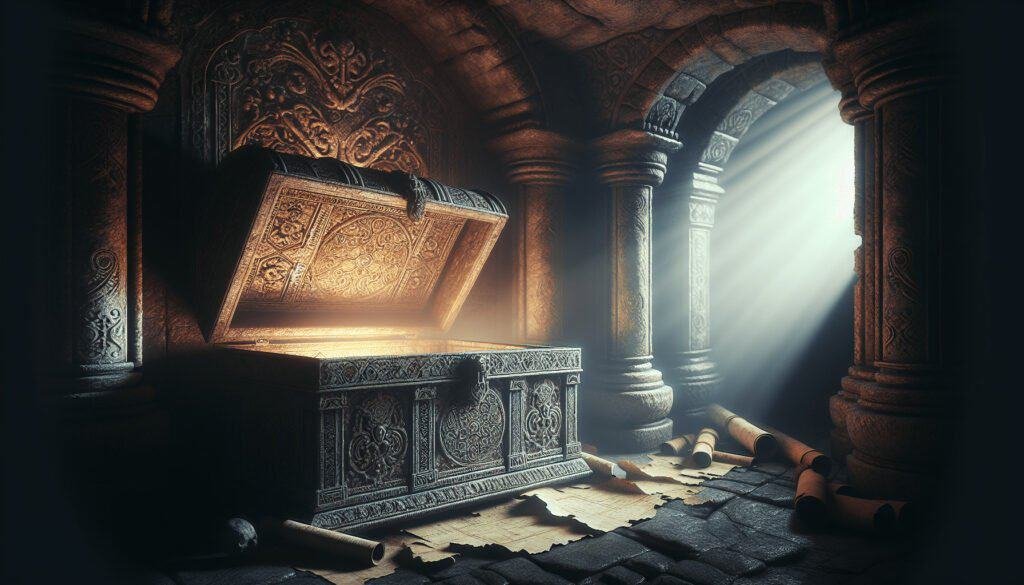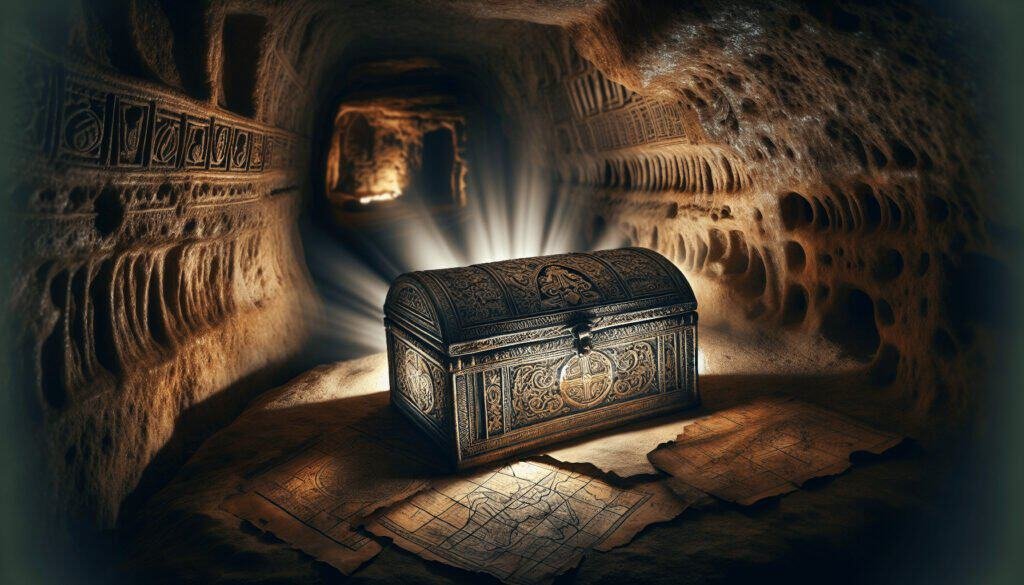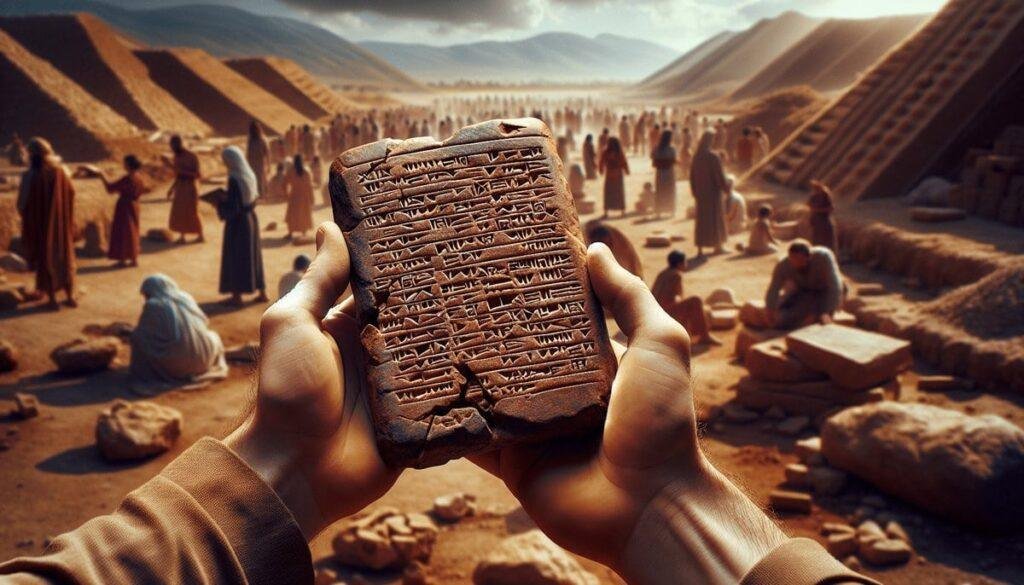What do you think motivates people to seek hidden truths during tumultuous times?
When wars break out or societies face great upheaval, it seems that people not only scramble for answers but also for signs and prophecies that could shed light on their uncertain futures. There’s something alluring about the notion of a “secret hideout,” especially one filled with the whispers of prophecies from the past. This intrigue connects the dots between ancient texts and current affairs, giving us rich material to scrutinize. So let’s take a leisurely stroll through the annals of history, alive with archaeological wonders, scriptural debates, and the bumbling quest for meaning amid chaos.
The Mysterious Chest of Prophecy
What Is the Chest of Prophecy?
The Chest of Prophecy, a rather captivating term, evokes images of treasure hidden away from prying eyes. Some might think of it as a literal box filled with scrolls or tablets, while others might ponder it as a metaphorical collection of wisdom—knowledge waiting to be unearthed.
The concept is often reminiscent of biblical tales detailing lost objects energizing quests among various peoples. Just as the Ark of the Covenant is said to contain the Ten Commandments, this Chest serves as a repository of—or at least inspiration for—prophetic insight, especially during times of war.
A Brief Historical Context
Imagine for a moment the Middle Ages, a time rife with feudal wars, the Crusades, and a generally bleak outlook on human affairs. Prophecies played a significant role during these tumultuous periods, with many believing that celestial signs indicated divine intent about the course of human events.
The need for understanding and perhaps even hope in dark days gave rise to prophetic texts. Both medieval scholars and common folk scoured ancient scriptures searching for signs of future calamities or salvation.
The Archaeological Gatekeepers
What Does Archaeology Say?
When you look back at history through the lens of archaeology, it becomes clear that our material past holds the keys to understanding how societies grappled with their fears and hopes.
Dead Sea Scrolls: These ancient texts, unearthed in the mid-20th century, contain a wealth of information. They not only include portions of the Hebrew Bible but also various sectarian writings. These scrolls serve as breadcrumbs leading us back to the ideologies and prophecies that shaped ancient Judaism and early Christianity, particularly during tumultuous upheaval.
The Nag Hammadi Library: Discovered in Egypt, this collection contains texts that shine a light on early Christian thought, often through the lens of Gnosticism. Some of these writings offer unique and, at times, conflicting perspectives on prophecy.
The Oracle of Delphi: While it’s not strictly archaeological, the practices at Delphi played a crucial role in how the ancient Greeks sought societal guidance through divine omens. Often, texts and messages from oracles reflect a community’s anxiety during wartime.
Academic Debate: A Collision of Perspectives
The study of prophecy is hardly a straightforward affair. Scholars often find themselves in heated debates about interpretations and authenticity.
Contextual Disambiguation: It’s vital to consider the cultural contexts from which prophecies sprang. A text may have appeared as a fervent warning in one timeline yet evolved into a mere literary curiosity centuries later.
Translation Nuances: Language evolution injects a touch of chaos into the study of prophetic texts. The choice of words can shift from something ominous to playful within mere syntax changes.

The Sacred Bureaucracy: How Texts Became Tools
The Role of Religious Institutions
During wartime, religious bodies often stepped into dominions that might seem unrelated. They interpreted texts, assigned meanings, and sometimes used prophecy as leverage against competing factions or rival beliefs. Want to know how?
Divine Justification: Many leaders turned to prophetic claims to declare war or justify actions. When one ruler invoked the words of prophets, it often galvanized his followers, giving a supernatural aura to brutal conflicts.
Contested Authority: Different religious groups didn’t just have different texts; they had different interpretations. These texts became ammunition in theological debates, much like political factions leverage ideological beliefs today.
The Propagation of Prophecies through Wars
The interplay between prophecy and warfare creates a cycle—wars create chaos, which breeds prophetic literature, which in return influences future conflicts. It’s a tantalizing loop!
- Fulfilling Predictions: Many conflicted groups sought fulfillment of prophecies as signs to legitimize their sociopolitical agendas. For instance, during the Protestant Reformation, many factions reread scripture to tailor narratives fitting their identities as underdogs during turbulent times.
Debates and Discussions: Modern Perspectives on Ancient Texts
Contemporary Conversations Surrounding Prophecy
As each generation grapples with the texts of yesteryear, new questions arise.
Faith vs. Skepticism: The ongoing tug-of-war between faith in prophetic words and modern skepticism often leads to lively discourse. Some argue that only those with faith appreciate the texts in their fullness, while skeptics question any validity behind their writings.
Ethical Dilemmas: With prophecies as substantial influences on public policy, ethical implications come into play. When alleged prophecies are utilized to incite war or justify violent acts, what do we make of their ancient origins?
How the Social Fabric Shifts with Prophecy
In wartime, communities often reframe their identities based on prophetic proclamations, both real and imagined.
Cultural Narratives: It’s not unusual for cultural narratives to adopt elements of ancient prophecy. For example, when leaders or communities appeal to “the ancients,” they often invoke prophecy to rally individuals around a common cause, presenting as guardians of a sacred tradition.
Modern Interpretation: New interpretations often materialize through the advancement of communal social media, showcasing how versatile these texts can be in contemporary contexts.

The Theological Tapestry interwoven with Time
The Unending Debate
The interplay between prophecy and theology is like an intricate tapestry—colorful, complex, and sometimes downright bewildering.
How Do We Interpret Signs?: Individuals often parade their interpretations, proclaiming how current events align with ancient prophecies, invigorating debates that can spin out like a top.
The Voice of the Past: Voices from centuries ago continue to echo in today’s conversations, often serving as guides—or misguided warnings—through turmoil.
Global Context: Understanding Diverse Perspectives
In various cultures, prophecy takes distinct forms, reflecting not just religious beliefs but also cultural sentiments and historical contexts.
Eastern Traditions: Whether it’s Chinese oracle bones or Hindu texts, the prophetic nature takes different characteristics based on local traditions and tensions.
Indigenous Perspectives: Many indigenous groups globally possess rich oral traditions of prophecy that often provide unique worldviews that diverge from dominant Western narratives.
Prophecies in Literature and Arts
The Artistic Expression of Prophecies
As much as text-based discussions are pertinent, art has long played the role of embodying prophetic themes. Be it films, literature, or theater, the artistic expressions often mirror societal beliefs on prophecies.
Dystopian Narratives: In modern literature, dystopian themes often nod to biblical prophecies. Consider fictional works that imply prophetic sequences or troubled futures as reflections of societal fears—perhaps a warning to heed ancient wisdom.
Visual Arts: Artists frequently draw inspiration from prophetic narratives, using symbolism and metaphor to reflect woes and hopes etching mankind’s journey carved along the ages.
Sharing Stories: The Oral Narratives
Throughout history, oral traditions preserved stories of prophecy, leading to communal debate. The telling and retelling heightened engagement, creating spaces where interpretations morphed with each generation.
- Folk Songs and Tales: Often folk tales, driven by prophetic undertones, served as both entertainment and teaching tools, enabling societies to process the chaotic landscapes in which they lived.
Bridging the Gap: Modern Applications of Ancient Wisdom
What Can We Learn Today?
With all this information, a pressing question surfaces: What can you and I extract from this treasure chest in our modern lives?
Critical Thinking: As you navigate the various teachings and claims rooted in ancient texts, perhaps the most enduring lesson remains the importance of questioning and challenging the narratives that captivate society’s imagination.
Community and Belonging: Aligning with communities that both cherish and question prophetic teachings can provide camaraderie, both where you feel understood and where your mind can expand.
The Living Legacy of Prophecies
The debate surrounding prophecy is not one limited to the pages of ancient texts. It’s an ongoing narrative connecting human experiences across time and space.
Rituals and Remembrance: Some cultures commemorate significant prophecies through festivals, reflective of their historical significance and the modern expressions they inspire.
Connecting Dot by Dot: By looking at ancient texts through contemporary lenses, you can grasp how these developments mirror modern conflicts and societal needs.
Wrapping It Up: The Pulse of Wisdom Through Centuries
So here is where we land, isn’t it? Your journey through the secret hideout has revealed not only the intricacies surrounding prophecies during wartime but how those remnants shape our contemporary narratives. By understanding these prophetic debates, you enhance your grasp of history’s lessons, connecting to a broader human experience.
As you ponder the prophetic views of yesteryears, remember the complexity of interpretation: both scholarly debates and personal musings all shimmer like a richly woven tapestry. It’s your narrative now, intertwined with those ancient voices and the noisy tumult of today’s world.
In the end, it is your journey—you stand as the seeker in this grand, unfolding tale where secrets of the past meet the fervor and urgency of the present, a constant reminder that history holds watches, and perhaps prophecies, for us all.


